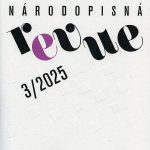
This study examines the image (representations) of life and housing in the former workers' colony of Dornkappel, today the Bratislava district of Trnávka, during the period before the Second World War and the socialist era. The settlement emerged as a workers' colony on the outskirts of Bratislava in the late 1920s and early 1930s, acquiring a reputation as a backward, poor and socially inferior neighbourhood with harsh living conditions. In the second half of the 20th century, the growing locality, now renamed Trnávka, was gradually integrated into the urban fabric. Nevertheless, its image as both a territorial and social periphery within Bratislava persisted. After 1989, the situation changed and Trnávka transformed into a desirable and attractive place to live.
People moving to the suburbs of Bratislava, the Slovak capital, often see this step as a route to personal and family security, social mobility, and a family-focused lifestyle. While some have successfully adapted to the suburban life, others have struggled to develop a sense of belonging, sometimes leading to a return to the city. Based on twenty ethnographic case studies, this paper examines how suburban placemaking, belonging, and homemaking connect and develop through individual trajectories, perceptions, and lived experiences. It emphasises how suburban stories are shaped by residents’ ongoing efforts to reimagine and renegotiate their homes regarding their daily life and how communication and care are organized within their families, both at present and in their envisioned futures.
This study focuses on the analysis of rural households’ furnishings with furniture, and table and bed textiles, the spread of which is regarded as a significant indicator of the cultural transformation of the countryside during the sixteenth century. In view of the limited source base, comparable works in the Czech lands have so far been devoted exclusively to the aristocratic and burgher environment. New possibilities were opened up by extensive quantitative research into a unique corpus of official sources from the Pardubice manor, which contain descriptions of the furnishings of rural households. This robust source base made it possible not only to describe the functional and aesthetic aspects of the furnishings, but also, for the very first time, to conduct important statistical surveys focused on the representation of individual items of furnishings, their prices, and contemporary preferences in materials, colours, and constructional solutions.
Furniture formed a significant part of the production of the Centre for Folk Art Production (ÚLUV). The design of furniture for contemporary interiors drew only limited inspirations from domestic vernacular furniture. The architect Vladimír Bouček introduced the so-called režný [≈ unbleached, raw, natural] style which became a defining feature and was grounded in the fundamental principles of folk production: the use of natural materials, the application of traditional techniques, and the respect for the tectonics of the object. Designers also took inspiration from timeless Scandinavian forms, primarily in seating furniture made of light-coloured wood, willow twigs, and rattan. In urban households in the 1960s through 1980s, ÚLUV furniture was typically represented by single pieces, while the programme aimed at furnishing of holiday cottages and chalets gained greater popularity. The distinctive appearance of the furniture, complemented by textiles and ceramics, played a crucial role in shaping the ÚLUV style, which was presented in the Krásná Jizba [≈ Beautiful Chamber] shops.
This study focuses on the analysis of rural households’ furnishings with furniture, and table and bed textiles, the spread of which is regarded as a significant indicator of the cultural transformation of the countryside during the sixteenth century. In view of the limited source base, comparable works in the Czech lands have so far been devoted exclusively to the aristocratic and burgher environment. New possibilities were opened up by extensive quantitative research into a unique corpus of official sources from the Pardubice manor, which contain descriptions of the furnishings of rural households. This robust source base made it possible not only to describe the functional and aesthetic aspects of the furnishings, but also, for the very first time, to conduct important statistical surveys focused on the representation of individual items of furnishings, their prices, and contemporary preferences in materials, colours, and constructional solutions.
Jubilees and Obituaries
Josef Jančář Has Passed Away (1931–2025) (Martin Šimša)
Exhibitions
Exhibition “Egg” (Daniel Drápala)
The Project and Exhibition of the Same Name “Lace for Marie” (Petra Mertová)
Exhibition “Šumava Glass amid the Turmoil of Wartimes” in the Pavilion of Glass (PASK) in Klatovy (Marta Ulrychová)
Exhibition “By a Hair’s Breadth: The Story of Zdenka Fantlová” (Marta Ulrychová)
News
The International Workshop on the Traditional Construction Technique Using Mud Lumps (Martin Novotný)
Spa picnic in Luhačovice (Hana Dvořáková)
Festivals
The Jubilee International Folklore Festival Strážnice 2025 (Hana Hlôšková)
Reviews
F. Vrhel: Vybrané texty o etnologii, lingvistice a Borgesovi [Selected Texts about Ethnology, Linguistics, and Borges] (Ondřej Hejnal)
P. Bulena – M. Křivanová – N. Pospíšilová – I. Vojancová: Muzeum v přírodě Vysočina [The Vysočina Open-Air Museum] (Martin Novotný)
Contents in English
10469
10468
10467
10466
10465